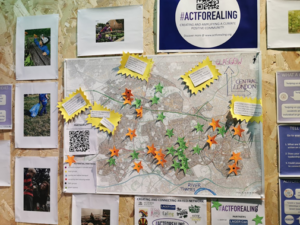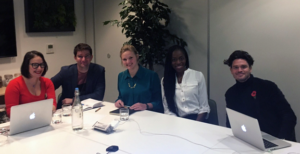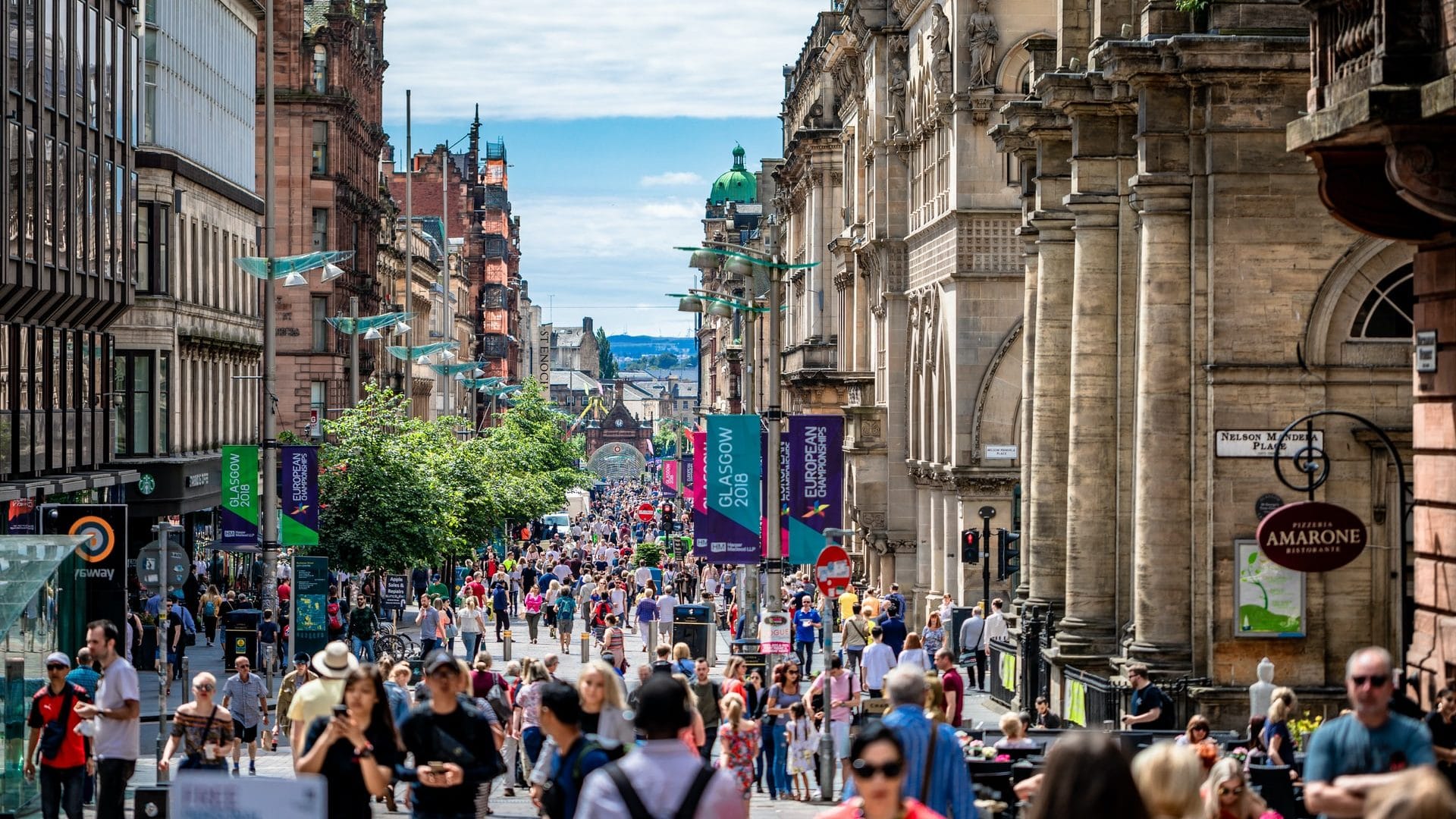Create Streets deputy director David Milner explains how policies that enable a gentle intensification of our towns and cities is the best way to reduce the carbon emissions of transport.
Transport is the UK’s worst emissions offender (27% of CO2 emissions) and an enormous consumer of energy produced in this country. It was a surprise then that it wasn’t until day 10 (of 12) of COP26 in Glasgow for it to take centre stage. Fortunately for me, the lighter crowds meant I was able to find a seat on the electric train and connect onto the electric bus to Glasgow Science Centre. So far so green.
From the bus stop the dreary walk to the Green Zone brought me back down to earth with a great example of a hostile pedestrian environment (see below). The greatest form of global transport is our legs, yet the walk in required some nifty dodging of an array of electric cars which should have no place in the city of the future regardless of their fuel. There was a missed opportunity inside the green zone to display what urban design can do for transport by showcasing examples of the walkable mixed-use cities of the future. How we move around is ultimately a result of how we design the towns and cities in which we live and maybe a Create Streets stand is in order next time at COP 27.


There was a focus, understandably, on technology with hydrogen buses and improved batteries on show but missing were the thought leading ideas and policies that may allow sustainable cities and transport to thrive. Policies such as;
- Street votes, which would allow a gentle intensification of our suburbs, placing homes in sustainable location, instead of more sprawl;
- Aligning the VAT costs for retrofit buildings with those of new buildings, encouraging the recycling of buildings rather than incentivising a cycle of demolition and rebuild and its embodied carbon cost and;
- Tackling some of the rules like excessive back-to-back distances and regulations on light, which would render the most loved and sustainable, dense, tight city-blocks of Europe’s old towns illegal to build today.
Luckily some of this thinking was on show at the Urban Design Group festival of urbanism taking place, like many of the more exciting events, on the fringe of the high security blue zone. I was fortunate to take part in a discussion on community sustainability hubs, a neat idea to convert vacant shops at the heart of the community into places for people to learn how to save money, go green and get engaged with their local council over green issues.
Whilst it is up to policy makers and industry to create the conditions and incentives for sustainability, without the leadership and drive of our community groups we will never implement and scale the change we need to keep 1.5 degrees alive.

Ealing residents with their community-led campaign for a green future
The challenge is clear and it is time for urban designers and planners to arrive at the top ‘climate’ table alongside the energy and automotive sectors. If we are to keep our heads above water, we should start here;
- Design new developments and improve existing ones to have the density of population that supports a mixture of offices, shops and sports fields within a 20 minute walk from your front door;
- Provide the trams and cycleways that allow you to get to work quickly and your 12 year old to cycle to school safely;
- Ensure the buildings themselves are popular, beautiful and loved so that in 40 years they aren’t torn down to make way for another regeneration attempt. The embodied carbon in a typical Victorian terraced house would drive a car ten times round the world. We must build for the long term and retrofit our existing homes;
- Regreen the existing streets we live in, increasing biodiversity, helping to drain water and cool our neighbourhoods, and finally
- Undo the fast road urbanism that has polluted and desecrated our town and city centres and restore the traditional street patterns with new homes in sustainable locations, knitting communities back together.
If we do all of the above and tackle the root cause of our unsustainable lives, we may find that we don’t need as much energy and materials in the first place.
David Milner is deputy director of Create Streets

A special thanks of course to The Urban Design Group for inviting me to speak and to Civic Engineers for kindly hosting me so well later in the evening.


